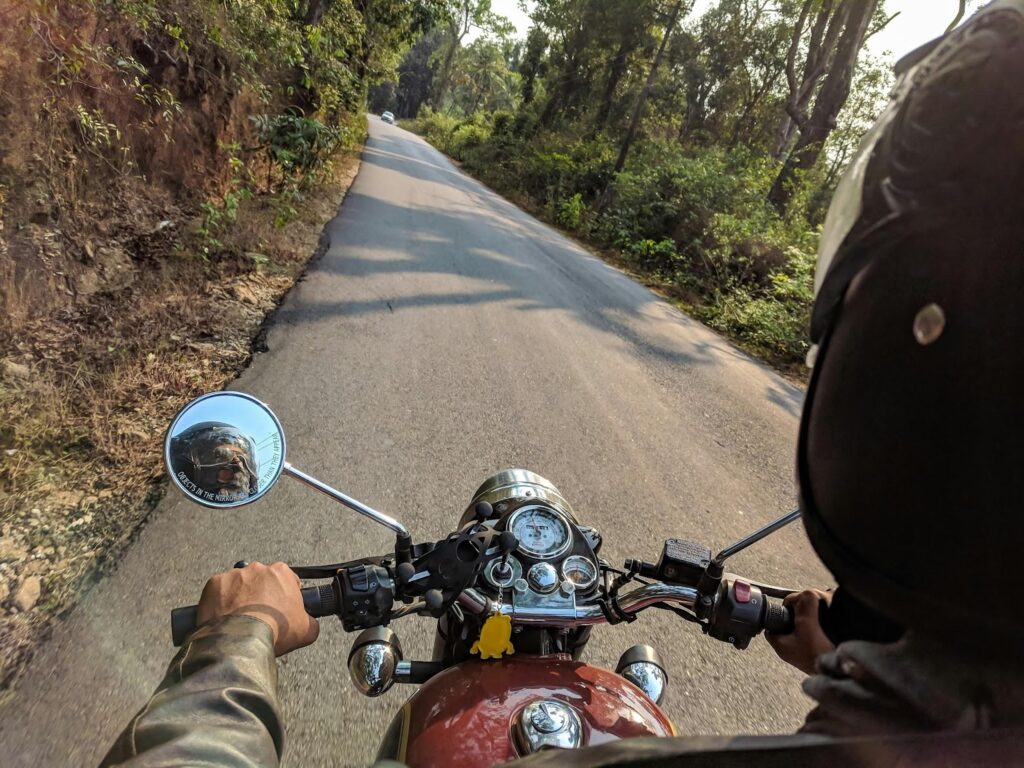Motorcycle riding offers freedom, speed, and an unmatched connection to the open road. Unfortunately, it also comes with higher risks compared to other forms of transportation. Motorcyclists lack the protective structure of cars, making them far more vulnerable to serious injury in the event of a crash. Even at relatively low speeds, the impact of a collision or loss of control can cause long-term physical damage that alters a rider’s quality of life. Understanding the most common injuries from motorcycle accidents is not only important for prevention, but also for knowing when medical and legal support may be necessary.

Head and Brain Injuries
Head trauma is one of the most severe outcomes of a motorcycle accident, even when a helmet is worn. Concussions, skull fractures, and traumatic brain injuries (TBIs) can occur from direct impact or the rapid jolt of a rider’s head during a crash. TBIs often have lasting effects on memory, concentration, and motor skills.
Wearing a DOT-approved helmet drastically reduces the risk of fatal head injuries, but no safety gear can eliminate the possibility entirely. Riders who experience dizziness, headaches, confusion, or loss of consciousness after an accident should seek immediate medical evaluation. The long-term costs, both medical and personal, of a brain injury make early treatment and rehabilitation crucial.
The Role of Legal Guidance in Recovery
Beyond medical treatment, navigating the aftermath of a motorcycle accident often involves complex insurance claims and liability disputes. This is where biker injury lawyers can make a difference, helping riders understand their rights, gather necessary documentation, and pursue fair compensation for medical costs, lost wages, and long-term care needs. Legal guidance is especially important in cases involving disputed fault or catastrophic injuries that require extensive rehabilitation.
Road Rash and Soft Tissue Damage
When a rider is thrown from a motorcycle, they often slide across the pavement, resulting in abrasions known as road rash. While the term might sound minor, these injuries can range from superficial scrapes to deep wounds that damage muscles, tendons, and nerves.
The friction from asphalt can embed debris into the skin, increasing infection risk and potentially leading to permanent scarring. Wearing proper riding gear, including armored jackets and reinforced pants, can significantly reduce the severity of road rash. Severe cases may require skin grafts and extensive wound care, underscoring the importance of both prevention and prompt treatment.
Fractures and Broken Bones
Motorcycle accidents frequently cause fractures, with common sites including arms, legs, wrists, and collarbones. The impact of being thrown from a bike or crushed under its weight can easily break bones, sometimes in multiple places. Compound fractures, where bone breaks through the skin, are dangerous due to the risk of infection and long recovery periods.
Depending on the location and severity, fractures can require surgical intervention, metal plates or pins, and months of rehabilitation. Recovery often means time away from work, adding financial strain to the physical challenges.
Spinal Cord Injuries and Paralysis
The spine is particularly vulnerable in motorcycle accidents, especially in high-speed collisions or situations where the rider lands awkwardly after being thrown. Damage to the spinal cord can lead to partial or complete paralysis, profoundly affecting mobility and independence.
Even without paralysis, back and neck injuries can result in chronic pain, nerve damage, and limited range of motion. Protective riding gear with built-in back support can offer some level of defense, but spinal injuries remain among the most life-altering consequences of a motorcycle crash.
Internal Injuries and Organ Damage
Blunt force trauma from a collision can cause internal bleeding or damage to vital organs such as the liver, kidneys, or lungs. These injuries are particularly dangerous because symptoms may not appear immediately, delaying treatment and increasing the risk of life-threatening complications.
After any significant accident, riders should undergo a thorough medical evaluation, even if they feel fine initially. Internal injuries require prompt diagnosis through imaging and other tests to ensure swift surgical or medical intervention if needed.
Prevention and Safety Practices
Reducing the risk of severe injury starts with consistent safety measures. This includes wearing full protective gear, maintaining regular motorcycle inspections, and adhering to speed limits and road rules. Defensive riding techniques, such as anticipating other drivers’ actions and avoiding blind spots, can help prevent collisions.
Investing in advanced rider training courses also equips motorcyclists with the skills to handle emergency situations, from sudden stops to evasive maneuvers. While no amount of preparation can eliminate risk entirely, these measures greatly improve the odds of avoiding or minimizing injury.

Motorcycle accidents can lead to a wide range of injuries, from road rash and fractures to life-altering spinal cord or brain damage. Awareness of these risks underscores the importance of proactive safety measures, prompt medical attention, and, when necessary, experienced legal support. By understanding the most common injuries and their consequences, riders can make informed decisions that protect both their health and their future on the road.













